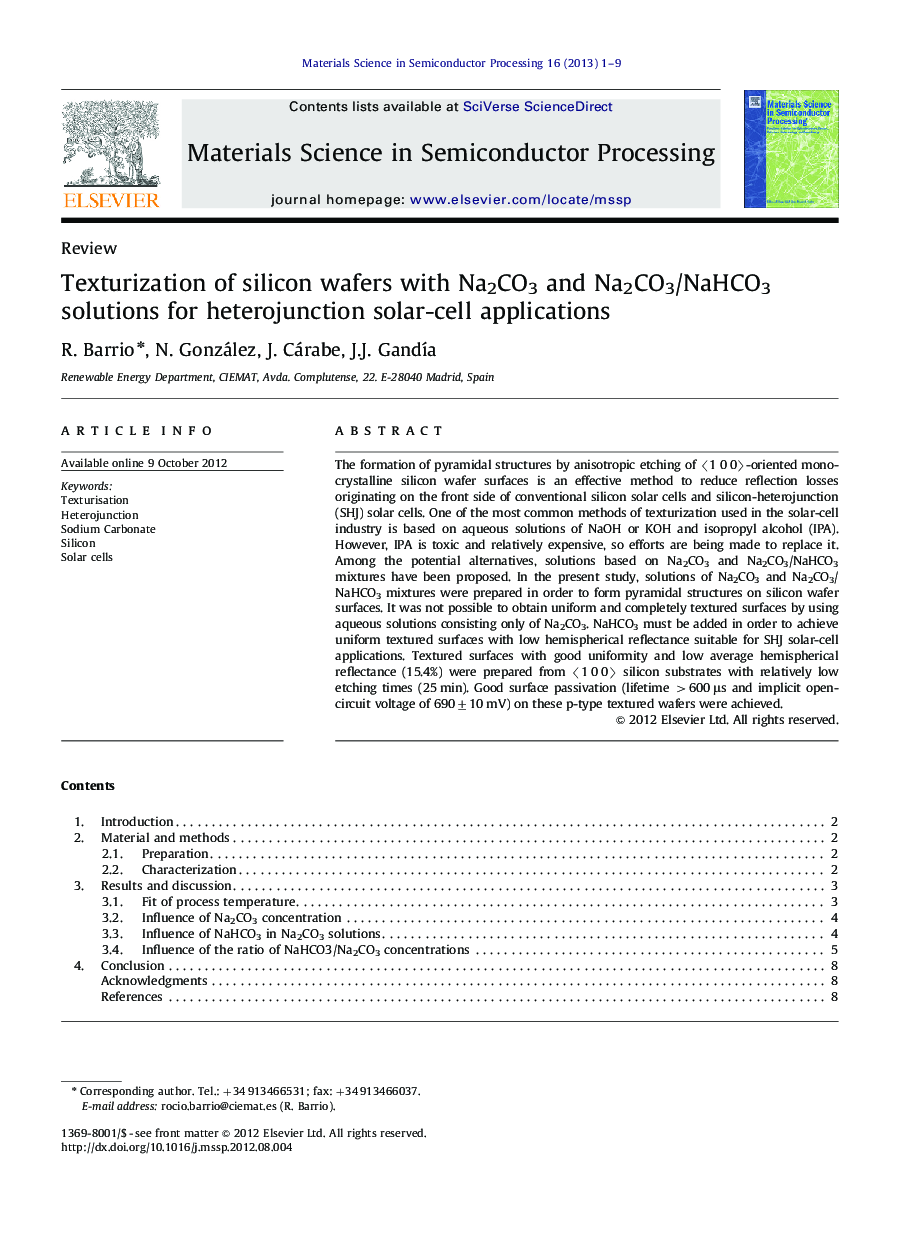| Article ID | Journal | Published Year | Pages | File Type |
|---|---|---|---|---|
| 728353 | Materials Science in Semiconductor Processing | 2013 | 9 Pages |
The formation of pyramidal structures by anisotropic etching of 〈1 0 0〉-oriented monocrystalline silicon wafer surfaces is an effective method to reduce reflection losses originating on the front side of conventional silicon solar cells and silicon-heterojunction (SHJ) solar cells. One of the most common methods of texturization used in the solar-cell industry is based on aqueous solutions of NaOH or KOH and isopropyl alcohol (IPA). However, IPA is toxic and relatively expensive, so efforts are being made to replace it. Among the potential alternatives, solutions based on Na2CO3 and Na2CO3/NaHCO3 mixtures have been proposed. In the present study, solutions of Na2CO3 and Na2CO3/NaHCO3 mixtures were prepared in order to form pyramidal structures on silicon wafer surfaces. It was not possible to obtain uniform and completely textured surfaces by using aqueous solutions consisting only of Na2CO3. NaHCO3 must be added in order to achieve uniform textured surfaces with low hemispherical reflectance suitable for SHJ solar-cell applications. Textured surfaces with good uniformity and low average hemispherical reflectance (15.4%) were prepared from 〈1 0 0〉 silicon substrates with relatively low etching times (25 min). Good surface passivation (lifetime >600 μs and implicit open-circuit voltage of 690±10 mV) on these p-type textured wafers were achieved.
